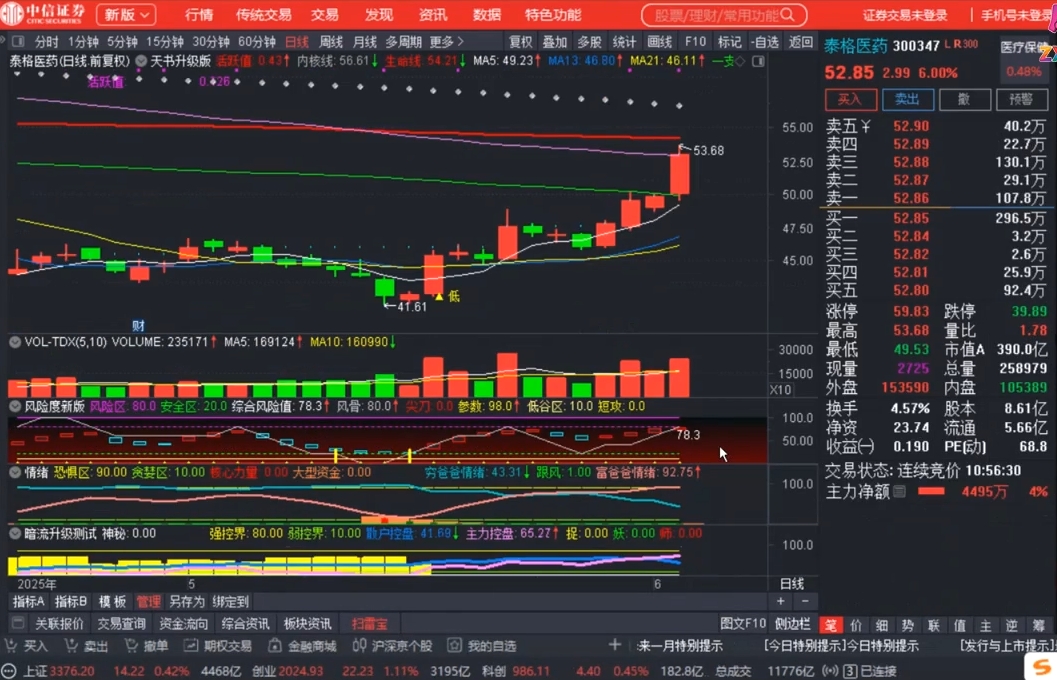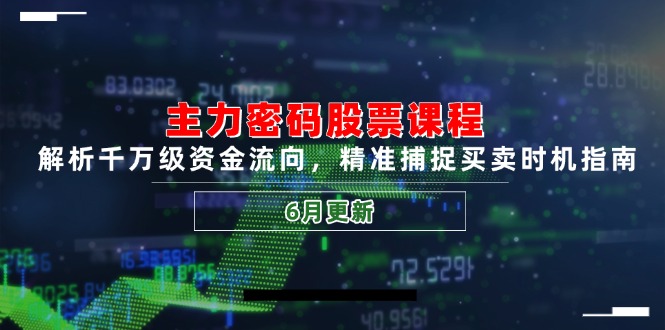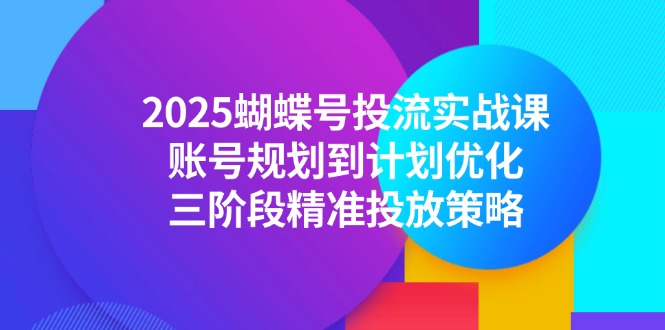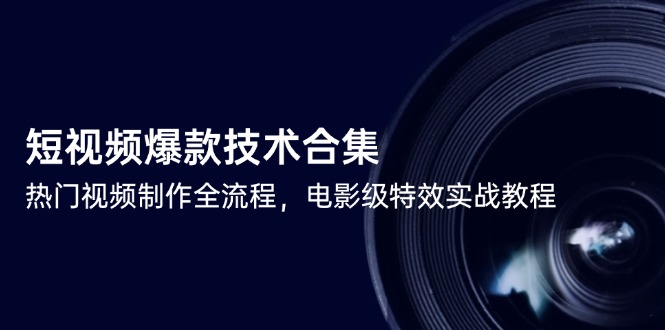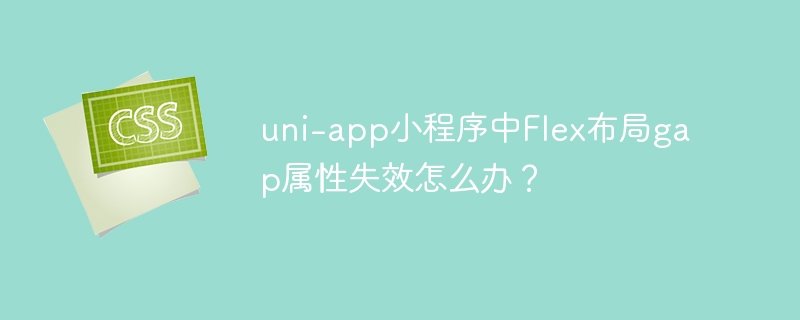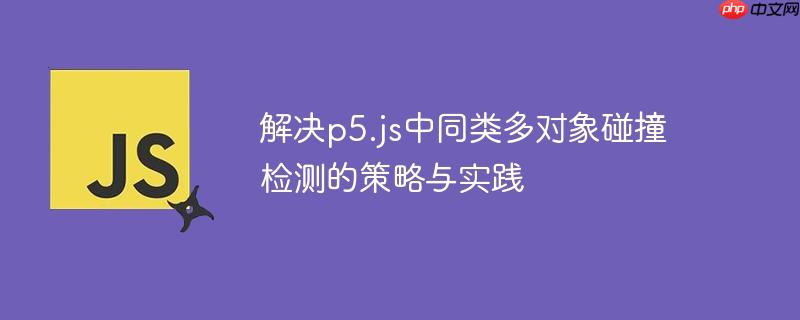
本文深入探讨了在p5.JS游戏开发中,当引入多个相同类型对象(如多个球和多个挡板)时,如何正确实现对象间碰撞检测的问题。针对常见的设计缺陷——将不同职责(如挡板和球的状态)耦合在单一类中,导致碰撞检测逻辑失效,本文提出了通过职责分离(创建独立的挡板和球类)和集中化碰撞检测(在主循环中遍历所有可能碰撞对)的解决方案,并提供了清晰的代码示例和最佳实践。
问题背景与核心挑战
在p5.js中开发类似pong的游戏时,当游戏逻辑需要动态添加新的游戏元素(例如额外的玩家挡板、ai挡板和球)时,开发者可能会遇到一个常见的问题:尽管使用了如p5.collide2d这样的碰撞检测库,但新增对象之间的碰撞却无法正常工作,或者仅限于特定“配对”的对象之间。
这种现象的根本原因往往在于对象设计和碰撞检测逻辑的耦合方式。原始代码中,一个名为Thing的类被设计用来同时管理玩家挡板、对手挡板和球的状态(位置、速度、颜色等)。当创建多个Thing实例时,每个实例内部的collide()方法只负责检测“自身”所包含的挡板与其“自身”所包含的球之间的碰撞。这意味着,如果存在两个Thing实例,第一个实例的球无法与第二个实例的挡板发生碰撞,反之亦然,因为它们的碰撞检测逻辑是相互独立的,并未考虑所有对象之间的交叉碰撞。
解决方案:职责分离与集中式碰撞检测
要解决这一问题,核心思想是遵循“单一职责原则”并采用集中化的碰撞检测策略。
1. 职责分离:重构对象设计
首先,将不同的游戏元素(挡板和球)从单一的Thing类中分离出来,创建独立的类来管理它们各自的状态和行为。这将使代码结构更清晰,也为后续的通用碰撞检测奠定基础。
Paddle 类设计Paddle 类应负责管理挡板的位置、尺寸、移动逻辑以及颜色。
class Paddle { constructor(x, y, w, h, isPlayer = false, color = '#22ff2266') { this.x = x; this.y = y; this.width = w; this.height = h; this.isPlayer = isPlayer; // True for player, false for opponent this.color = color; this.speed = 5; // Paddle movement speed } show() { noStroke(); fill(this.color); rect(this.x, this.y, this.width, this.height); } move(ballY = null) { if (this.isPlayer) { // Player paddle movement if (keyIsDown(DOWN_ARROW)) this.y += this.speed; if (keyIsDown(UP_ARROW)) this.y -= this.speed; } else { // Opponent ai movement (simple follow) if (ballY !== null) { this.y = ballY - this.height / 2; } } // Limit paddle position this.y = constrain(this.y, 0, height - this.height); } }
Ball 类设计Ball 类应负责管理球的位置、尺寸、速度、颜色以及其自身的移动逻辑。
class Ball { constructor(x, y, size, color = '#ff222266') { this.x = x; this.y = y; this.size = size; this.speedX = 5; this.speedY = 5; this.color = color; } show() { noStroke(); fill(this.color); rect(this.x, this.y, this.size, this.size); } move() { this.x += this.speedX; this.y += this.speedY; // Bounce off top/bottom walls if (this.y < 0 || this.y > height - this.size) { this.speedY *= -1; } } reset() { this.x = width / 2; this.y = height / 2; this.speedX = 5 * (random() > 0.5 ? 1 : -1); // Random initial direction this.speedY = 5 * (random() > 0.5 ? 1 : -1); } }
2. 集中式碰撞检测
一旦对象职责分离,我们就可以在主程序循环(draw()函数)中,遍历所有球和所有挡板,进行全面的碰撞检测。这通常通过嵌套循环实现。
let paddles = []; let balls = []; let score = 0; // Example score function setup() { createCanvas(600, 600); rectMode(CORNER); // Ensure consistent rect mode // Create initial player paddle, opponent paddle, and ball paddles.push(new Paddle(20, height / 2 - 30, 10, 60, true, color(255, 229, 236))); // Player paddle paddles.push(new Paddle(width - 30, height / 2 - 30, 10, 60, false, color(255, 229, 236))); // Opponent paddle balls.push(new Ball(width / 2, height / 2, 10, color(255, 255, 255))); // White ball } function draw() { background(255, 194, 209); drawGameElements(); // Draw score, middle line etc. // Update and display paddles for (let paddle of paddles) { // For opponent, pass the first ball's Y position paddle.move(balls.length > 0 ? balls[0].y : null); paddle.show(); } // Update and display balls, and check collisions for (let ball of balls) { ball.move(); ball.show(); // Check collision with walls (score logic) if (ball.x < 0) { // Ball goes past player's side ball.reset(); score = 0; // Reset score // Remove extra balls if any while (balls.length > 1) { balls.pop(); } // Reset paddle sizes if they were changed for (let p of paddles) { if (p.isPlayer) p.height = 60; } } else if (ball.x > width - ball.size) { // Ball goes past opponent's side ball.speedX *= -1; // Opponent wall bounce (or reset logic) } // --- Core Collision Logic: Check this ball against ALL paddles --- for (let paddle of paddles) { // collideRectRect(x, y, width, height, x2, y2, width2, height2) let hit = collideRectRect(ball.x, ball.y, ball.size, ball.size, paddle.x, paddle.y, paddle.width, paddle.height); if (hit) { ball.speedX *= -1.01; // Reverse X direction and slightly increase speed ball.speedY *= 1.01; // Slightly increase Y speed // Only increase score if it's the player's paddle hitting the ball if (paddle.isPlayer) { score++; // Example: Add a new ball at score 5 if (score === 5 && balls.length < 2) { balls.push(new Ball(width / 2, height / 2, 10, color(0, 0, 0))); // Black ball // Optionally make player paddle larger for (let p of paddles) { if (p.isPlayer) p.height = 100; } } } } } } // Display score fill(255, 229, 236); textSize(35); textAlign(CENTER); text(score, width / 2, height / 8 + 12); } // Helper function for game visuals function drawGameElements() { rectMode(CENTER); fill(255, 229, 236); rect(width / 2, height / 8, 100, 50); // score box rect(width / 2, height / 2, 5, height); // middle line rectMode(CORNER); }
引入库文件: 确保在html文件中引入p5.js和p5.collide2d库:
<script src="https://cdnjs.cloudflare.com/ajax/libs/p5.js/1.6.0/p5.min.js"></script> <script src="https://unpkg.com/p5.collide2d"></script>
关键考量与最佳实践
- 单一职责原则 (SRP): 每个类都应该只有一个职责。将挡板和球的状态及行为分离到各自的类中,可以大大提高代码的可读性、可维护性和可扩展性。
- 数据结构选择: 使用数组(如paddles和balls)来存储多个同类型对象是常见的做法。这使得遍历和管理这些对象变得简单。
- 碰撞检测效率: 对于少量对象(如本例),嵌套循环的碰撞检测是可行的。但如果游戏中有大量可碰撞对象(例如几百个),这种O(N*M)的复杂度会成为性能瓶颈。届时,需要考虑更高级的碰撞检测算法,如空间分割(四叉树、网格系统)来优化检测范围。
- 游戏状态管理: 游戏中的分数、模式切换等全局状态应由主程序或专门的游戏管理器来维护,而不是分散在各个游戏对象内部。
- 调试技巧: 使用console.log()输出碰撞检测的结果(如hit变量的值)是调试碰撞问题非常有效的方法。
通过以上重构和策略调整,可以确保游戏中所有相关的球和挡板都能正确地进行碰撞检测,从而实现预期的游戏行为,即使动态添加了新的游戏元素也能保持其功能性。






